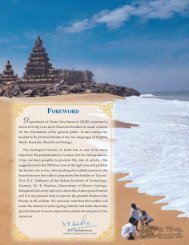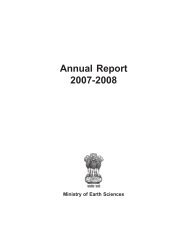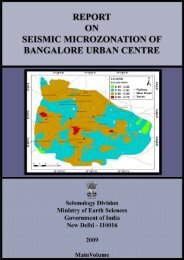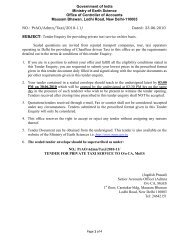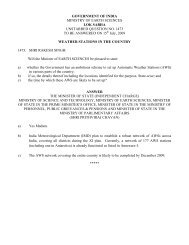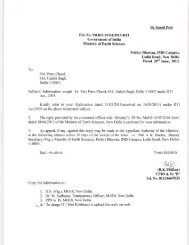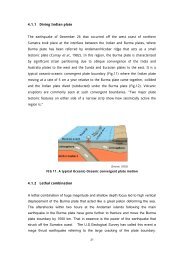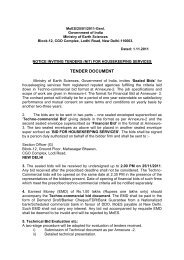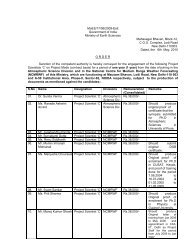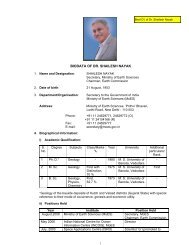Annual Report 2009-2010 - Ministry Of Earth Sciences
Annual Report 2009-2010 - Ministry Of Earth Sciences
Annual Report 2009-2010 - Ministry Of Earth Sciences
Create successful ePaper yourself
Turn your PDF publications into a flip-book with our unique Google optimized e-Paper software.
Fig. 7.8: Primary productivity (mgC/m2/day) estimated from satellite chl using Vertically Generalised<br />
Production Model (VGPM)<br />
7.7 Marine Living Resources (MLR)<br />
Programme<br />
The main objective of the MLR programme is<br />
to correlate living resources with the physical<br />
environment and establish response strategies of<br />
living organism to changes in the environment.<br />
Spatio-temporal progression of Summer<br />
Monsoon (SM) upwelling along the southwest<br />
(SW) coast and associated productivity patterns<br />
including the distribution and abundance of fish<br />
eggs and larvae and, the hydrography especially<br />
warming of the Lakshadweep area and its<br />
influence on MLR were studied. The studies<br />
indicate that, the forcing mechanisms and<br />
upwelling patterns are not homogeneous to the<br />
entire coast and shows high degree of variability<br />
both in time and space. Other activities under<br />
MLR includes preliminary assessment of the<br />
impact of closed fishing season on the marine<br />
benthos along the Kerala coast, studies on the<br />
marine mammal diversity and distribution and<br />
establishment of Indian Ocean Biogeographical<br />
System (IndOBIS).<br />
Primary production in the euphotic column<br />
was maximum (>1000 mgC/m2/day) during the<br />
initial phase (June) compared to the withdrawal<br />
phase (September) of the upwelling process<br />
(800 mgC/m2/day). (Fig. 7.8)<br />
Highest density of fish eggs was recorded along<br />
30m stations off Kochi followed off Valappad and<br />
off Trivandrum.<br />
A dedicated site on Indian Ocean Biogeographic<br />
Information System (IndOBIS) has been<br />
established at CMLRE as the regional node of the<br />
Intergovernmental Oceanographic Commission<br />
(IOC) global biodiversity programme. The site<br />
currently holds information on the species diversity<br />
and abundance of 8722 species of marine animals<br />
and 1268 species of marine plants recorded from<br />
the Indian Ocean region.<br />
<strong>Ministry</strong> of <strong>Earth</strong> <strong>Sciences</strong> : <strong>Annual</strong> <strong>Report</strong> <strong>2009</strong>-10 49




